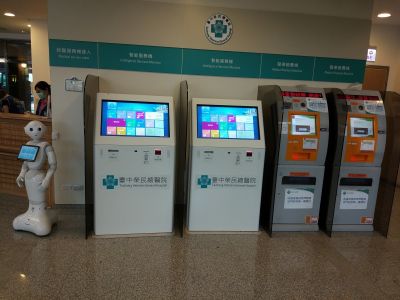Utilization of Smart Healthcare Technology for Outpatient Visit Process with Quality Service
Taichung Veterans General Hospital
Information
Benefits
"1. Diverse intelligent registration utilization rate reaches 88.87% in 2016, and the number of users exceed 1 million people. 2. The number of times of use of the diverse payment methods in 2016 increases by 67.4% higher than the number in 2015. 3. Regarding the outpatient clinic waiting time of public seeking medical service in the hospital, the waiting time saved in 2016 is 680,271 minutes, which is significantly lower by 190.8% in comparison to the period of 446,379 minutes saved in 2015. 4. The number of users using healthcare service robot is 1,698 people, the health education service robot has served 1,050 people, and the robot also detects that the public positive emotional feedback is 36.01%. 5. The overall outpatient satisfaction is above 89%."
